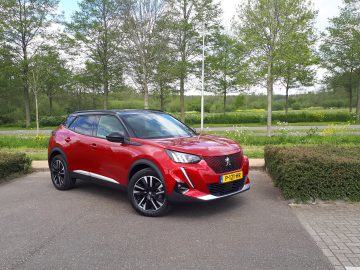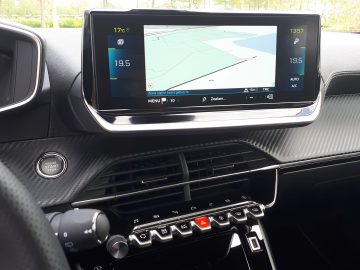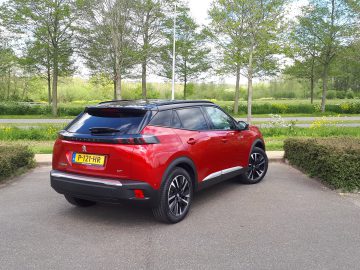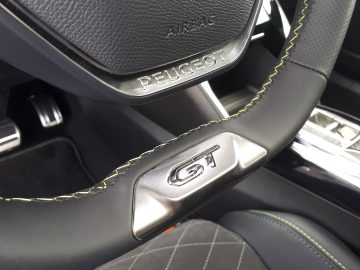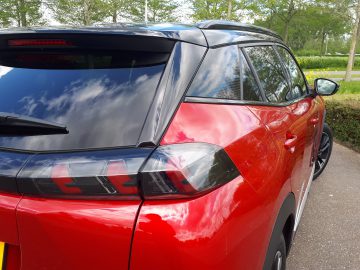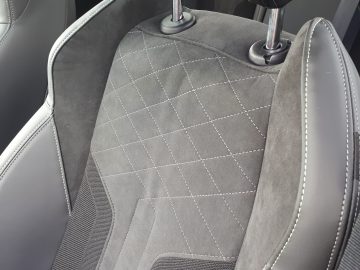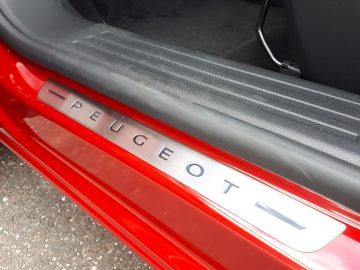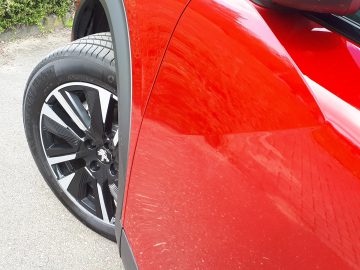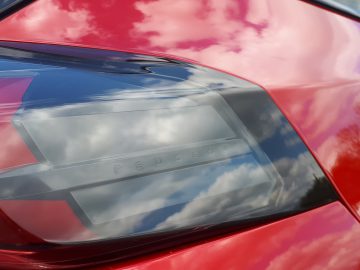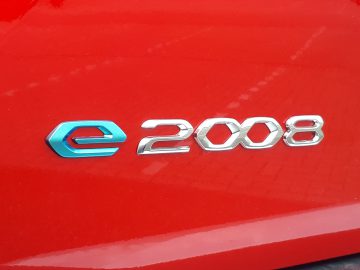In practice: long distances with an affordable EV
There are now enough electric cars with such a large range that you no longer have to worry about reaching your destination in one go. Not even if that destination is far away. However, the vast majority of those EVs are in the higher segment. If you want a somewhat affordable electric car, you currently have a range of about 300 km. According to an official statement, so in practice it is even lower.
In a week that we have planned a number of long journeys, we get the Peugeot e-2008 on loan. It now has an official WLTP range of 341 kilometers. A great opportunity to discover how far you can get with this in practice, if you are going to eat miles on the highway.
The specific version we tested also has a WLTP range of 332 kilometers, because, for example, the larger wheel size costs more energy. More information about the tested Peugeot e-2008 and its specifications can be found at the bottom of this article.

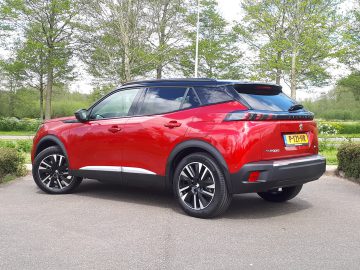

The context
We did not adjust our driving behavior during the test. In that sense: we maintain a calm driving style, but drive on the highway at 100 to 110 km/h with the traffic and power consumers such as the air conditioning and radio are switched on when desired. In short, we use the electric car as much as possible as we would use a fuel car. The weather will be alternately sunny and cloudy during the entire test week, with not too much wind and temperatures between 10 and 15 degrees. In short, basically good conditions for power consumption.
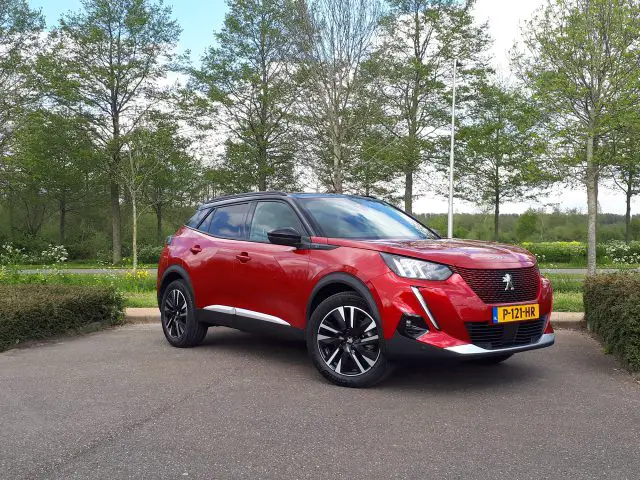
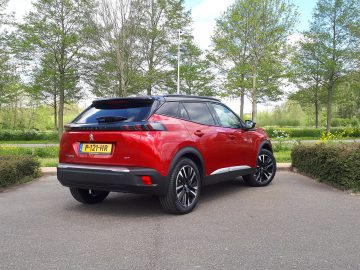

The first rides
The first trip is from the importer in Amsterdam to our editorial office in Bodegraven. That is a highway trip of about 50 kilometers. We leave with a fully charged battery and the on-board computer indicates more than 320 kilometers as the range. After arrival, the range appears to have decreased by about 70 kilometers.
The charging stations at the editorial office are occupied, but charging is not yet necessary. This is followed by a highway ride of about 90 kilometers. In doing so, we ‘deprived’ more than 130 kilometers of range. After returning home, the on-board computer indicates a remaining range of 104 kilometers after having driven 149 kilometers today. In other words, at 149 highway kilometers the car consumed 216 kilometers of range. The remaining battery charge is 43%.
I have the luxury of having a public charging station close to home where there is almost always room. Recharging the Peugeot is therefore no problem. When the battery is fully charged again, the on-board computer shows a range of 326 kilometers. That’s a bit more than this morning.

For real: the first long ride
After these ‘warm-ups’ the first really long ride follows: a return ticket from North Holland to Rhenen. Judging by the WLTP range, you should be able to go back and forth on one battery charge. However, on the exactly 130 km long way there, the Peugeot consumes 196 kilometers of range. There remains exactly 130 km of range on the on-board computer. Unfortunately, there is no charging station near the destination.
So there is exactly as much range as the way back is long, but in practice we will of course not achieve that. On the way we therefore make a stop at Fastned location De Poel, near Ede. Fast charging is actually just as simple as refueling. It’s a matter of logging in with the charge card, plugging the correct plug into the car and just waiting.
Speaking of the latter: is fast charging wasted time? Yes and no. On the one hand, we had not made this stopover with a fuel car. On the other hand, we just shifted a break. Instead of getting a drink just before departure, we now do so during the fast charging. Furthermore, waiting in the Peugeot e-2008 is no punishment: the seats offer more than enough comfort to sit out the loading break. The passengers in the back have nothing to complain about either.
Although the battery is still half full, the car’s on-board computer indicates that the fast charging session will take one hour. It turns out that the expected charging time is up to 100%, because in the end fast charging is just fast in practice. In two minutes, about ten percent battery charge has been added.

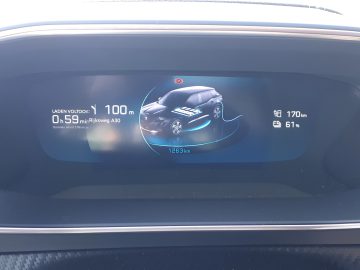

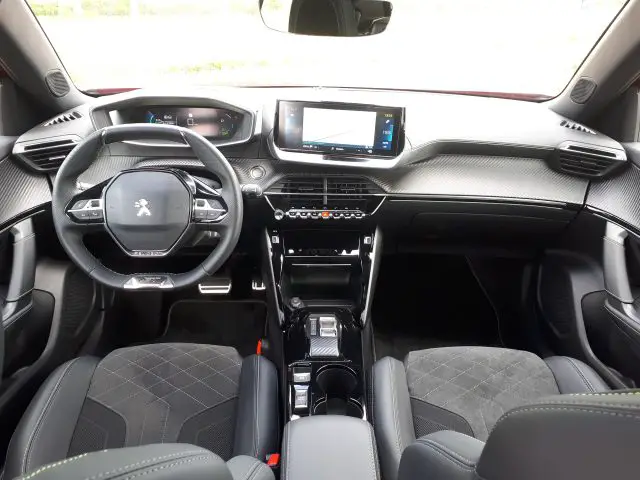
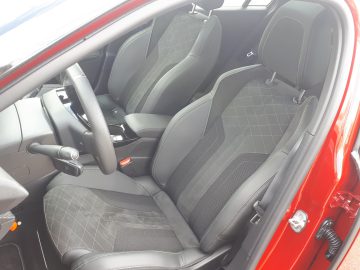
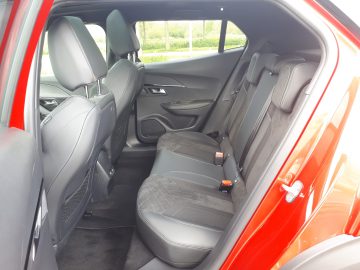
However, there is some surprise when the car continues to charge as soon as the battery status has reached 80%. To protect the battery, according to the manual, fast charging should stop at 80%. Charging is slightly slower after that 80%, so to protect the battery. After our 20-minute drinking break, the battery is 86% charged again, good for a range of 282 km. We’ll be on the road again soon.
When you return home, there is still about 80 kilometers of range left. Both places at the charging station appear to be occupied this time. It is already evening, so charging the car again today is not going to be it. Luckily I have no rides planned for tomorrow morning…


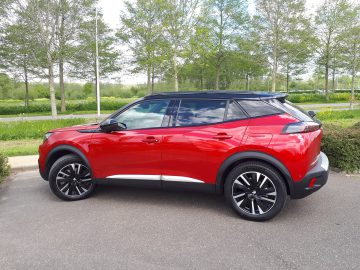
The big challenge: going abroad
When the charging station was free the next day, I fully charged the Peugeot again (again 326 km range on the on-board computer). Then comes the biggest challenge: a trip abroad. Well, to a destination just over the German border, but still. That is still a long way from North Holland. The first stage is 160 kilometers long. An advantage compared to the previous long ride is that today’s route consists almost entirely of N-roads. On some of them, the maximum speed is just as good as 100 km/h, but it still makes a difference in power consumption compared to a highway ride.
On the way there we hang the car on the fast charger during an already planned stopover in Zwolle. That gives just a little more ‘air’ in the further charging planning of the day. On the way to Zwolle we used up 152 km of range over 101 km. The stopover ultimately takes about 25 minutes, during which the battery is charged from 64 to 90%. For the time being, we don’t have to worry about charging options anymore.

The first destination for today is Uelsen, just across the border in Germany. On this 63km ride, we used up 84km of range, with 214km remaining. Charging is therefore not necessary for a long time. Couldn’t have done it either, because there are no charging stations at our destination on the edge of the village. There are two charging points at the center of the village, although we understand from residents that in practice these are always occupied by a small company.
Later in the day we drive to a village near Ommen. Over this distance of 30 km, the range decreased by 38 km. Same story here: charging is far from necessary. Good, because there were no charging stations within walking distance of our destination. In concrete terms, after fast charging this morning, we drove 93 km in Zwolle, consumed 122 km and still have 176 km of range left. Driving on N-roads makes a noticeable difference in power consumption compared to highways.
In theory we should come home with that remaining range in the evening, but we prefer a little more certainty. On the way home we make another stop at Zwolle at the same fast charger as this morning. In retrospect we are aware that we also put the car on the fast charger on the way there, otherwise it would probably have been tight to get to Zwolle. Then we would probably have made a detour via a fast charger in Hardenberg. On the 36 km to Zwolle we used 46 km of range. In 20 minutes we charge the battery from 48 to 79 percent, good for a range of 256 km.
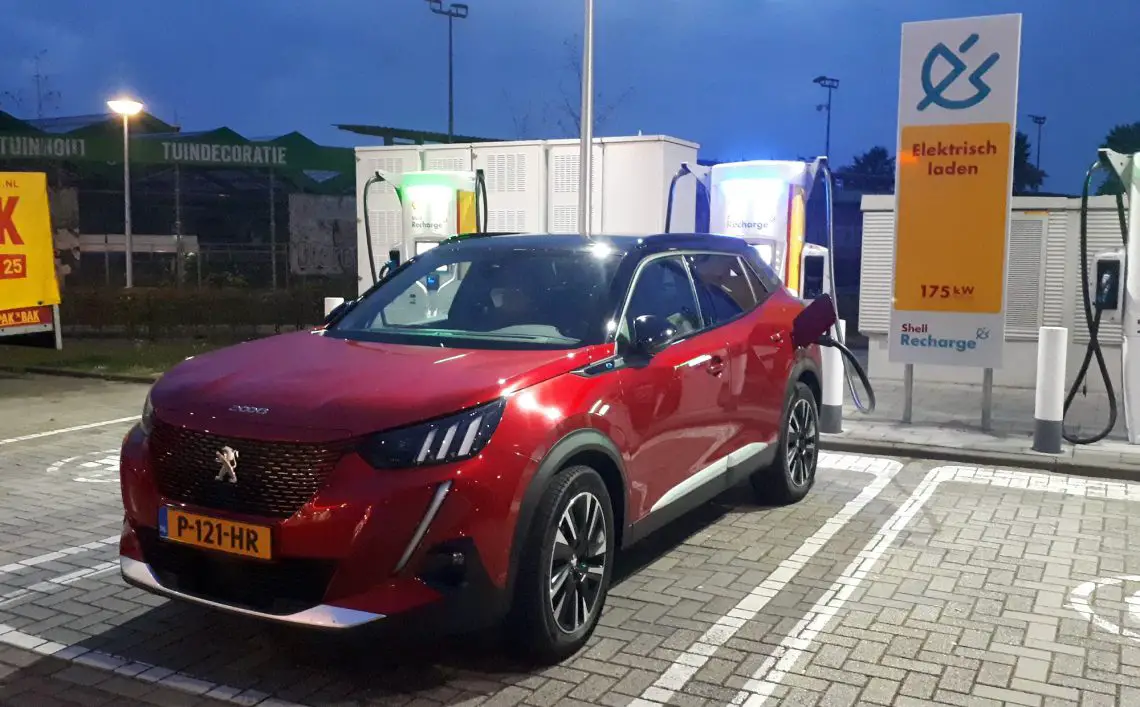
When we get home, we still have 44% battery charge and 114 km of range left. In other words, a ride of 97 km took 142 km of range. The stopover ‘just to be sure’ was therefore necessary.

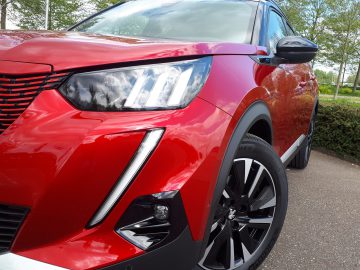
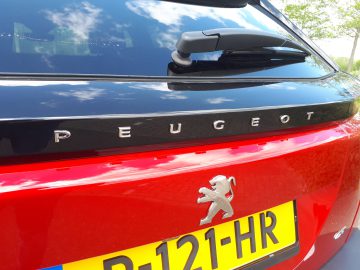
One last highway ride
After fully charging at home, the on-board computer reports a range of 330 km. Almost the WLTP value and also the highest that the on-board computer has indicated this week with a full battery. Again: driving on N-roads makes a noticeable difference in power consumption compared to highways. For the sake of completeness: on the 60 km long highway ride back to the importer, we consumed 94 km of range (78% remaining).
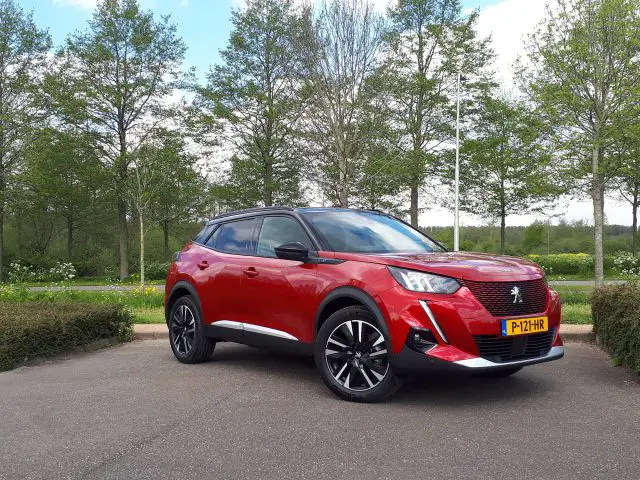
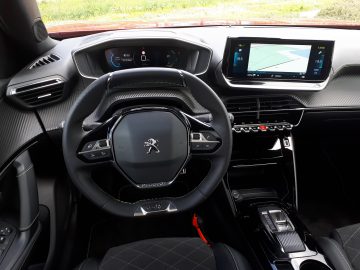

Conclusion
The most important question: is an affordable electric car practically usable for long journeys? The answer has certainly turned out to be ‘yes’, provided you’re willing to take an extra break or ‘move’ a break for fast charging. Suppose you really want to make a long journey, then the Peugeot e-2008 will suit you just fine: feel free to drive for two hours, take a twenty-minute (fast-charging) break and continue.
Making a long trip with an electric car generally requires a little more preparation, if only by checking where fast chargers are located and when it is most convenient to schedule that charging break. This is doable in the Netherlands, but abroad it can sometimes be a challenge.
This brings us to the secondary conclusion: in practical terms, an (affordable) electric car still beats a fuel car for longer journeys. If you can’t charge at home or at your destination, that immediately requires some extra organization. If you keep driving the same long journeys, there will of course be regularity and automaticity in charging. The time that we now lost preparing the rides will then be cancelled. However, if you always drive several long journeys, then it remains something to take into account.



Resource: ANWB Route Planner for electric cars
The ANWB Routeplanner is a handy tool for preparing your journeys, of which there is now also a version especially for electric cars. This allows you to plan a route for your specific make and model of electric car, where the route planner is based on the expected range in practice. The EV route planner is only a beta version, but during our week of testing it proved to be a useful tool. However, do not blindly follow the travel advice and also check the accompanying map for (fast) charging points, if the range turns out differently in practice than the planner predicts.
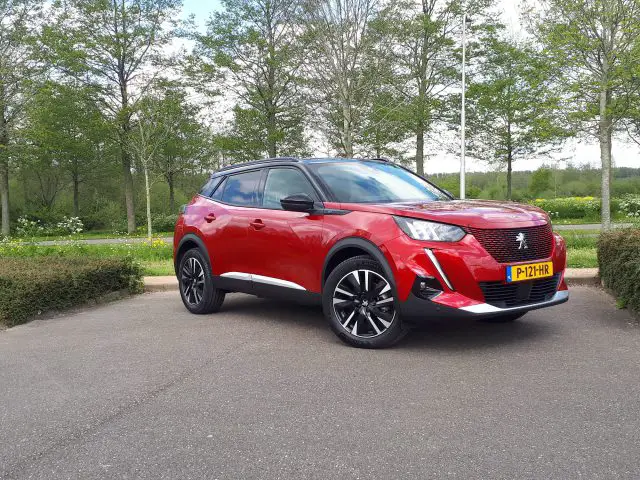


About the Peugeot e-2008
The current Peugeot 2008 came on the market in 2019 and was also available as a fully electric e-2008 almost from the start. The model recently underwent a minor update. The main news is that the official WLTP range has increased somewhat and the traditional gear lever has been replaced with a new switch.
Battery and charging Peugeot e-2008
The Peugeot e-2008 has a 50 kWh battery pack, with the latest version good for an official WLTP range of 341 kilometers. The car has an 11 kW 3-phase on-board charger. Fast charging with up to 100 kW is also an option. Full charging at a regular charging station takes just over five hours, fast charging from 10 to 80% battery charge takes 30 minutes as usual. In addition to charging, the charging cable can be conveniently stored in a bag (or separately) under the loading floor.
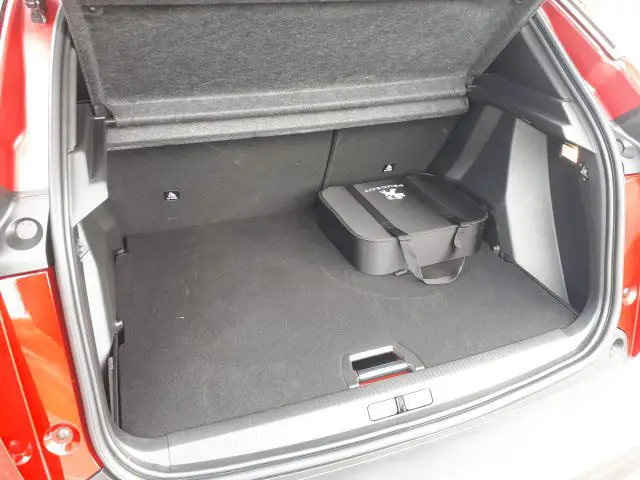
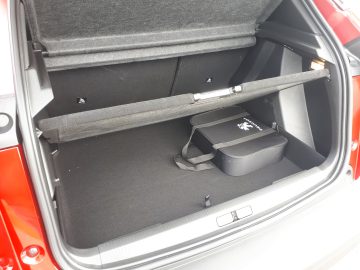
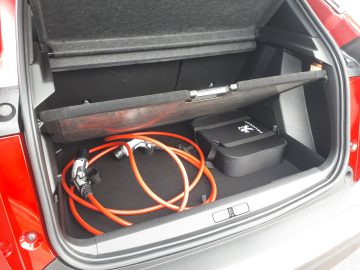
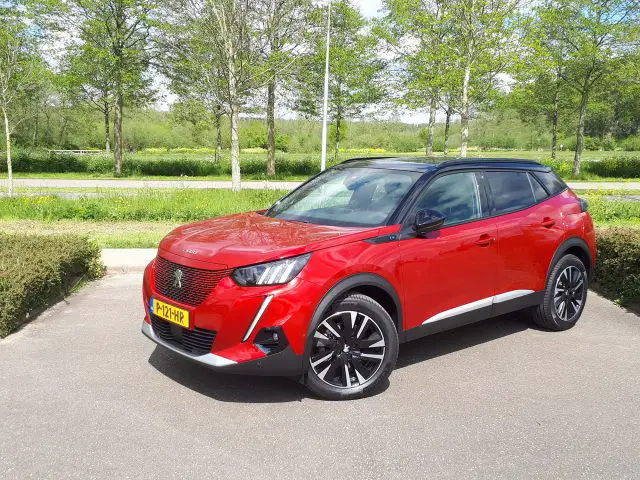
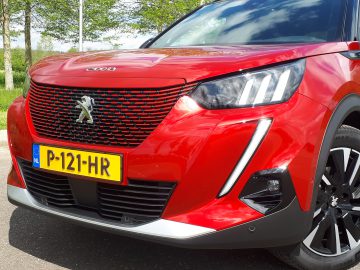
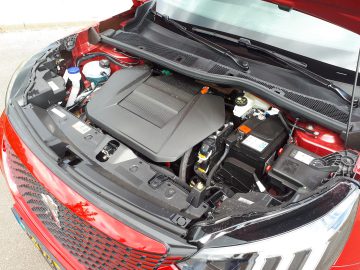
Power consumption in practice
According to the on-board computer, the average power consumption during our test week is 17.3 kWh per 100 kilometers. Quite neat considering the many highway kilometers, because the official WLTP consumption for the version driven by us is 16.0 kWh per 100 kilometers.
Drivetrain and weights Peugeot e-2008
The electric motor produces 100 kW (136 hp) and 260 Nm of torque. Acceleration from 0 to 100 km/h takes 9.9 seconds, the top speed is limited to 150 km/h. Snel was in front in the Netherlands and, except in terms of top speed, it was equivalent to the fuel versions of the Peugeot. The curb weight of the Peugeot e-2008 is 1,523 kg. The weight is not that bad for an electric car. For comparison: the fuel version weighs about 1,200 kg depending on the version. A more important difference: the e-2008 is not allowed to tow anything, the fuel version a trailer of up to 1,200 kg (braked).
Prices Peugeot e-2008
The starting price of the Peugeot e-2008 is currently 36,330 euros. A government subsidy of 3,350 euros will be deducted from this, as long as that subsidy is still available, of course. A Peugeot 2008 with an equivalent fuel engine and equipment is available from 31,060 euros, so the difference between the two is not too bad in that regard. Our test sample is a GT Pack (the top model) with a number of extra checked options and costs 45,110 euros (minus any subsidy). In general, the Peugeot 2008 price list starts at 29,560 euros. Current prices and equipment can be found at www.peugeot.nl .
